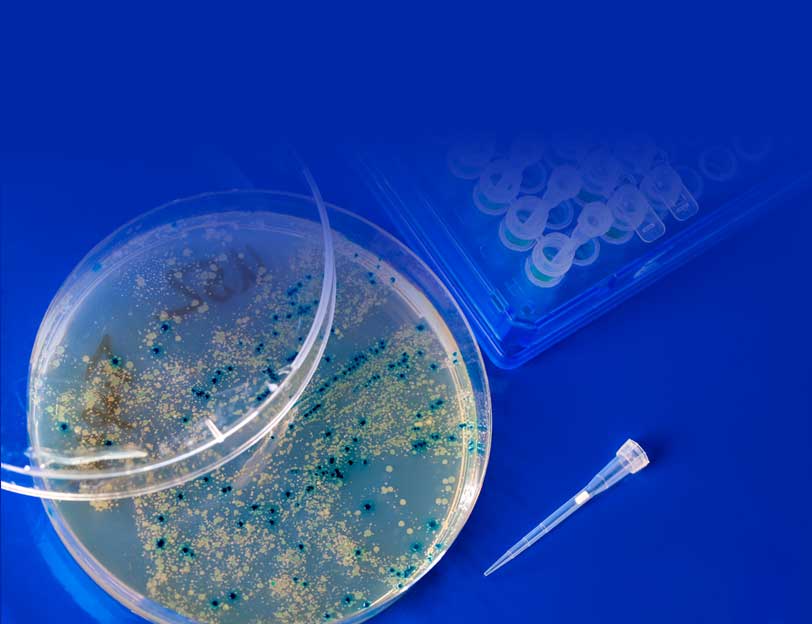Cloning and DNA Markers
Tools that modify nucleic acids provide the foundation for many molecular biology techniques such as subcloning. For conventional cloning of DNA fragments, we provide a variety of restriction enzymes and T4 DNA Ligase. For bacterial transformation we offer a choice of competent cells, including our unique Single Step KRX strain.
For other cloning applications we offer T4 DNA kinase, calf alkaline phosphatase and other modifying enzymes. For RNA transcription, T7, SP6 and T3 RNA polymerases are available.
An assortment of DNA/RNA markers including bench top and step ladders enable confirmation of a successful experiment.
Cloning and DNA Markers Product Groups
Bacterial Strains and Competent Cells
Ready-to-transform competent cells and E. coli glycerol stocks.
Cloning Vectors and Kits
Includes an array of cloning and subcloning vectors, and the convenient Flexi® Cloning Systems for protein expression.
Molecular Weight Markers
DNA markers in a variety of sizes and formats, including benchtop markers and step ladders. Includes RNA and protein markers.
Molecular Biology Enzymes and Reagents
Find ligases, polymerases, PNK, phosphatases, nucleases and more.
Restriction Enzymes
Quality, performance-tested enzymes for your routine cloning needs.
Top Cloning and DNA Markers Products for Your Lab
T4 DNA Ligase
Joins two dsDNA strands with cohesive or blunt ends by using the 5´-phosphate and the 3´-hydroxyl groups of adjacent nucleotides.
M1801, M1804, M1794
Single Step (KRX) Competent Cells
Ideal E. coli cells for recombinant protein expression, offering efficient transformation and regulated protein expression.
L3002
BenchTop 1kb DNA Ladder
Thirteen blunt-ended fragments of 250–10,000bp premixed with loading dye.
G7541
Need a product modified?
Contact us to discuss custom size, formulation, concentration, packaging and format options for Promega cloning and modifying enzymes.

Introduction to Cloning and DNA Markers
Subcloning is a basic procedure in molecular biology that is used to move inserts from one vector to another to gain desired functionality and to characterize a DNA sequence of interest.
One method to accomplish the transfer of a DNA insert uses restriction enzymes to digest both the fragment and the target vector, which is typically a plasmid. Confirmation of successful digestion is accomplished by comparing the expected size of the digested samples with DNA marker fragments. This is done by running samples on agarose gels to separate DNA fragments by size. T4 DNA Ligase is then used to “paste” the desired fragment into the digested plasmid.
The next step is transformation. Transformation of bacteria with plasmids is important because bacteria are used as the means for both storing and replicating plasmids. E. coli cells are more likely to incorporate foreign DNA if their cell walls are altered so that DNA can pass through more easily. Such cells are said to be competent. Selection for cells that have been transformed successfully is done by antibiotic selection for the plasmid of interest.
There are many options to confirm if the transfer was successful including PCR, digestion with restriction enzymes or sequencing. Once confirmed, the recombinant vector can be used for a variety of applications such as protein expression or RNA transcription.



